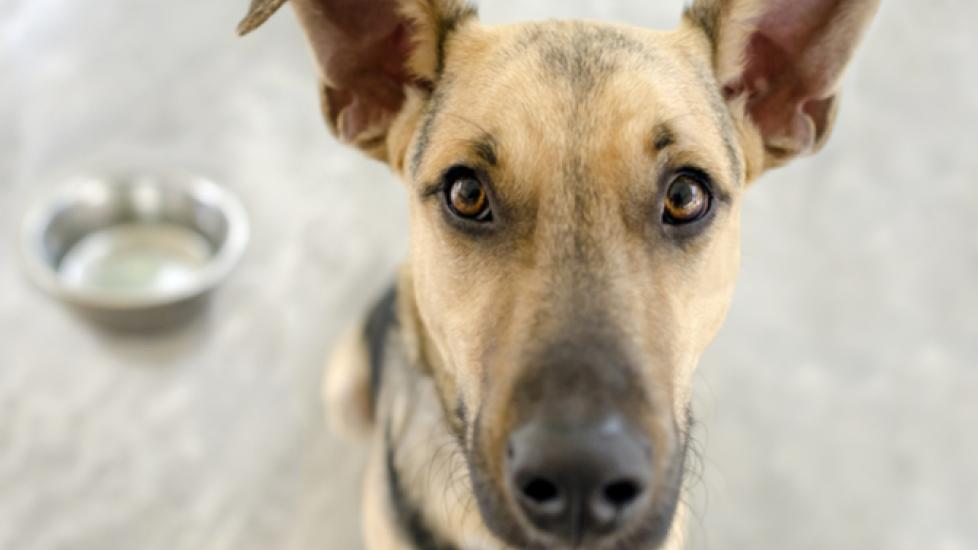Low-Protein Dog Food: Is It Right For Your Pet?
By Kate Hughes
Like any member of the family, your dog needs to eat a balanced and healthy diet to live a long, full life. Many experts consider protein to be the most essential macro-nutrient in you canine companion's dinner.
However, if your dog is suffering from one of a few chronic conditions, too much protein can be detrimental. If this is the case, your vet may put your dog on a low-protein diet to alleviate some symptoms and improve his overall health. But what exactly does “low protein” mean, and how can you make sure a low-protein diet is good for your pet?
What Constitutes Low Protein for Dogs?
According to the Association of American Feed Control Officials (AAFCO), an adult dog’s diet should contain a minimum protein content of 18 percent on a dry matter basis. “When you talk about pet food, you want to talk about it on a dry matter basis because water dilutes the protein content,” Dr. Ann Hohenhaus, a staff doctor at NYC’s Animal Medical Center, explains. “So if you measure the amount of protein in a cup of dry food, it will be much higher than in a cup of wet food. You want to be sure you’re not including the water in your assessment.”
Most commercial dog foods have a protein content that falls around 25 percent or so. But when it comes to low-protein diets, there are specialty foods out there that contain about half as much. The question is, when is it appropriate to feed your dogs this kind of diet?
What Canine Conditions Require Low-Protein Diets?
There are several medical conditions that might require a dog to go on a low-protein diet, such as kidney disease, liver disease, and some kinds of bladder stones. In the case of kidney or liver disease, a low-protein diet would be indicated to reduce the workload of these organs. “Both the liver and kidneys metabolize proteins,” Hohenhaus says. “So by reducing the amount of protein in the diet, these organs don’t have to work as hard.”
Hohenhaus notes that many of the kidney and liver conditions that would lead to a low-protein diet are chronic, meaning that the diet will be permanent.
Low-protein diets can also help prevent your dog from losing the protein that she’s already ingesting. According to Dr. Ariel Mosenco, clinical associate professor of medicine specializing in nutrition, endocrine issues, and internal medicine at the University of Pennsylvania School of Veterinary Medicine in Philadelphia, many dogs on low-protein diets for kidney issues have some form of protein losing nephropathy (PLN), a disease that is associated with progressive renal failure. “Some studies show that limiting the amount of protein in the diet limits the amount of protein lost by the kidneys,” he says.
But Mosenco notes that vets are not as quick to prescribe low-protein diets as they have been in the past. “A lot of the studies that show that low-protein diets have a positive effect on dogs with kidney disease also limit the amount of phosphorus that a dog ingests. Many vets are coming around to thinking that restricting phosphorus is a better method than restricting protein, which could cause the dog to lose muscle mass, among other health issues.”
While kidney and liver disease are some of the top conditions that would indicate a low-protein diet, there are other, less common indications. Hohenhaus says that urate bladder stones, which account for only 6 percent of all bladder stones found in dogs, can be addressed by switching the dog to a low-protein diet specially designed to dissolve the stones. “In this case, the diet wouldn’t be permanent,” she says. “It would only last until the stones are gone.”
Is a Low-Protein Diet Right for My Dog?
Both Hohenhaus and Mosenco are quick to mention that pet owners should never put their dogs on a low-protein diet without veterinary supervision. “Real low-protein diets aren’t available over the counter,” Hohenhaus says. “A veterinarian has to prescribe them. And you never want to design one yourself. These diets are for serious issues and you could make any issues your dog has worse.” Additionally, whether the diet is working can only be monitored through blood tests and similar procedures that must take place at a vet’s office.
If a vet does deem it necessary to put your dog on a low-protein diet, there are a few steps that owners can take to ensure the diet is a success. The first is guaranteeing that the protein your dog is getting is of a high quality. “If we’re restricting the amount of protein a dog is eating, we’re also restricting the essential amino acids a dog is ingesting,” Mosenco explains. “So we have to be sure there are enough essential amino acids in the dog’s diet, and supplementing those amino acids if necessary.” Mosenco adds that owners should be careful to stick to the diet, as “cheating” can negate its desired effect.
Pet owners should also be monitoring their dog’s weight and body condition. “You want to be sure your dog isn’t inappropriately losing or gaining weight due to his new diet,” Hohenhaus says. “Maintaining a healthy weight is key to your dog’s overall health.”
Help us make PetMD better
Was this article helpful?
